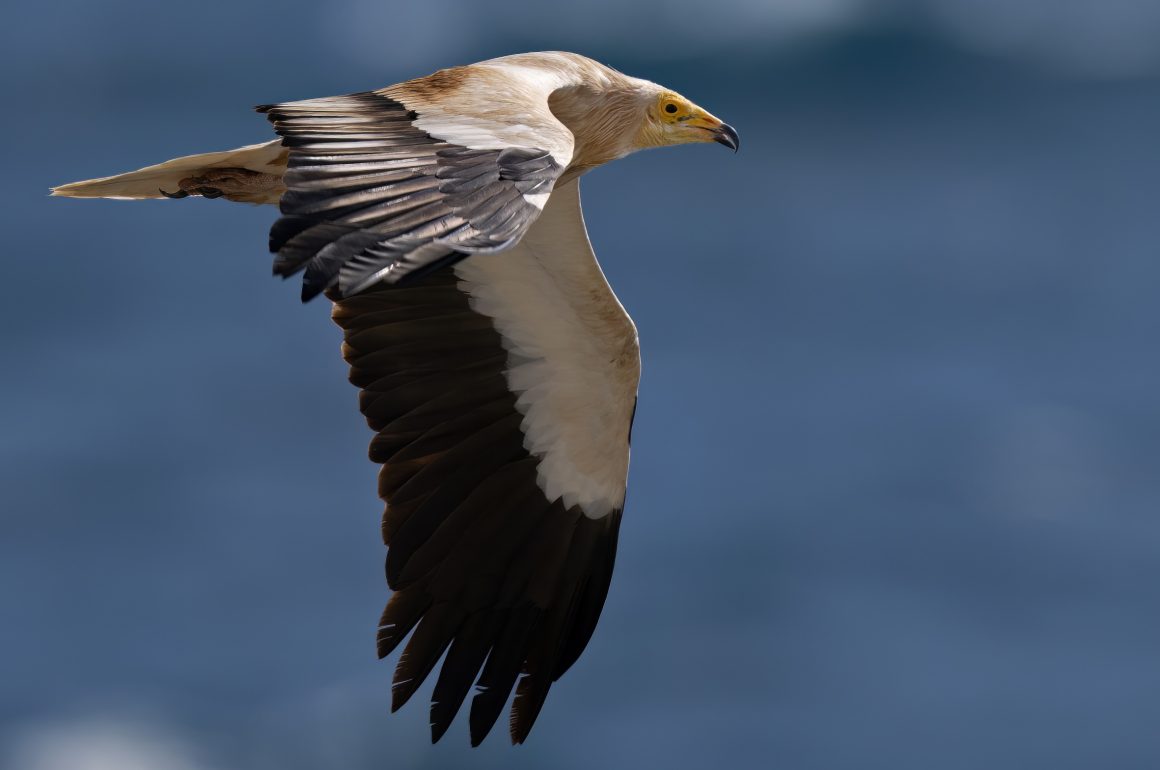
The Egyptian Vulture Neophron percnopterus has been one of my favourite birds since I was little. Look at it close up and it does look grotesque. I couldn’t describe it better than Willoughby Verner did in his book “My Life Among the Wild Birds in Spain” published in 1909: “It is when the Egyptian Vulture or Neophron, as it is also styled, is seen close at hand that it is revealed in all its hideousness. The bright yellow shrivelled-up skin of the naked head is most repulsive…and yet it must be repeated few birds present a finer sight when on the wing…”. I don’t share Verner’s total disgust with the landed bird but I do agree that seeing this bird on the wing is something quite special.
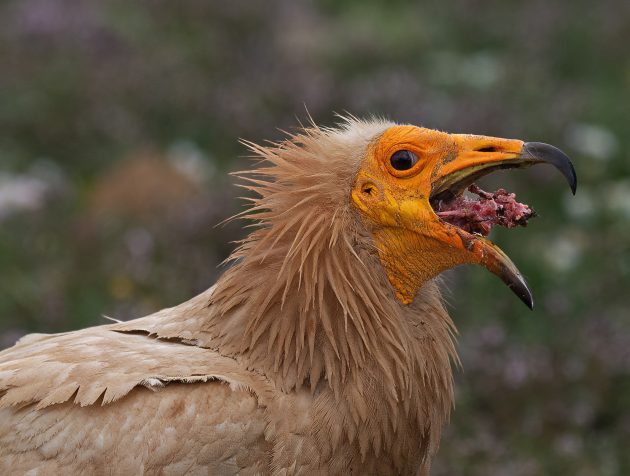
The bird, a summer visitor to Europe from winter quarters in the Sahel, is in decline across the continent. Its stronghold is the Iberian Peninsula. The most recent estimates suggest that some 1,500 pairs breed in Spain. That’s about half of the entire European breeding population. The population of Egyptian Vultures in Italy is nearing extinction, with fewer than 10 pairs, and numbers are also going down in the Balkans, now with fewer than 70 pairs.
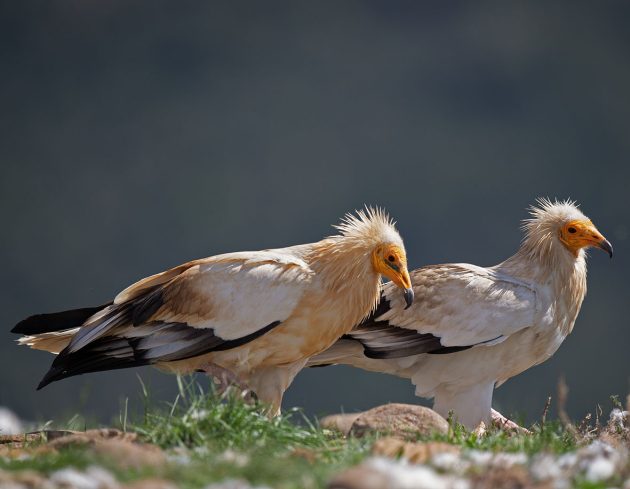
The latest Spanish breeding bird atlas (2014-18) compares the results with the previous atlas (1998-2002) and shows that Egyptian Vultures continued to breed in 60% of squares examined. They had disappeared from 16% but new sites accounted for 24%. So, at this stage, losses were being covered by gains at new sites. This corresponds well with observations of migrating Egyptian Vultures at the Strait of Gibraltar bottleneck where seasonal counts today are of the order of 3,000 birds, not dissimilar to those done in the 1970s.
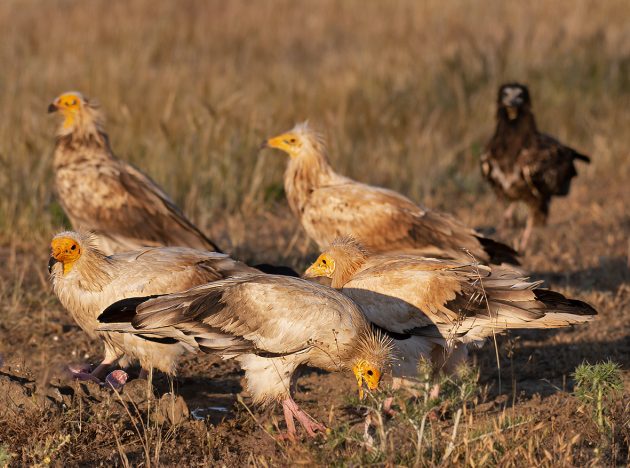
Looking at Spain’s southernmost region, Andalucia, we see that the population has remained steady, at around 25 pairs, since 2004. Look further back, to the first census undertaken and the number of breeding pairs had been estimated at 94 in 1987. So our picture changes to one of sharp decline in recent decades. The population is small and fragmented and considered to be in danger of extinction. Causes? The main ones are death by poisoning and by collision with windmills. Egyptian Vultures are particularly sensitive and vulnerable to windmills. Loss of habitat, disturbance and death by electrocution on high voltage cables are additional factors. Windmills are the cause of habitat destruction and death of so many birds and I find it annoying that these windmills are being put up “in the name of green”. It seems that these environmental, climate change-driven, agendas have been taken over by those with little knowledge of or empathy for the rest of life that lives in and shares this planet with us. Is the loss of populations and species of birds the price to be paid for a miniscule reduction in the carbon footprint? Where is the sustainability in that? History will judge us.
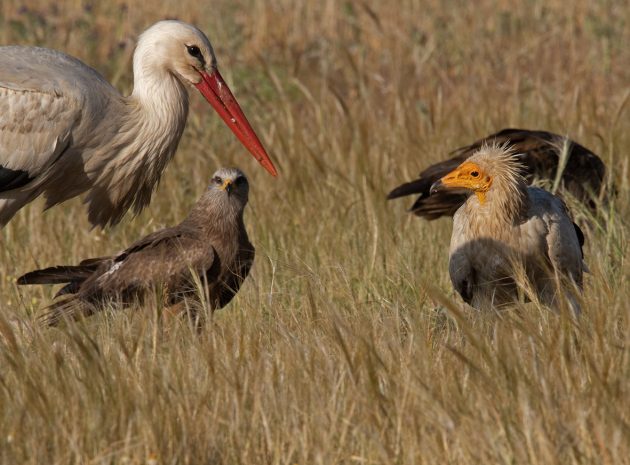
My passage above hints at something else that concerns me. This is the idea of shifting baselines. Take a look at the Egyptian Vulture population since 2004 and, with no prior knowledge, you would say it’s stable. Go back to 1987 and you begin to see a serious decline. But by 1987 the Egyptian Vulture population in Andalucia was already reduced. Now, let’s take it back even further. The ornithologist Howard Irby writing in his book “The Ornithology of the Straits of Gibraltar” written in 1895, had this to say of the Egyptian Vulture in southern Iberia then: “Near Gibraltar, Neophrons, during their stay, are abundantly distributed…Many pass northwards at the end of February…and the greater number, many hundreds, almost always in pairs, pass during March.” So if we shift our baseline back to Irby’s day we would have to conclude that the Egyptian Vulture, in southern Iberia at least, is a case of the “living dead”, a population that is a shadow of its former self and whose days are numbered, and only just kept alive largely by chance and no thanks to those “environmentally friendly” windmills.
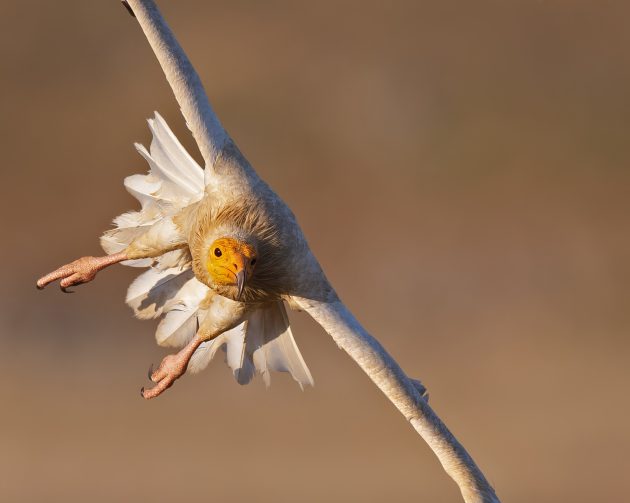













This article touches me deeply. I actively volunteer working with California Condors in Southern California. I appreciate Mr. Finlayson pointing out the irony regarding the windmills environmental purposes while birds are paying the price. Vultures and other scavengers are so vital to the overall ecosystem. Vultures are our planet’s natural clean-up crew aiding in removing deadly pathogens, such as bacteria and parasites that cause deadly diseases that move up through the natural food chain eventually reaching humans. Perhaps this fact is not as popular as the “green energy” movement, thus being ignored by the very same people who stimulate the environmentalist attitude. I’d love to see more publicity calling out those who advocate windmills and hypocritically dismiss the importance for the Vulture survival rate. If protective measures aren’t put in place surrounding the windmills and other structures, It’s just a matter of time the Egyptian Vulture will be on the brink of extinction (like the California Condor). For that, isn’t it the humans responsibility to protect these vitally important birds before it’s too late?
Fantastic photos of a fascinating bird. Makes me want to go to Spain and see them myself, though I would be scared of bringing my camera as my results would certainly not be as good.
Fascinating and saddening, thank you.
It’s even worse: wind turbine technology already allows for automatically spotting large soaring birds and stopping the blades temporarily until the bird has passed. Additionally, painting one blade black reduces hits significantly. And there are wind farms with volunteers during passage that call the control centre and let them stop the turbines. Three options to prevent “death by wind mill”. The question now isn’t “why do we let green energy policy kill birds?” but rather “why doesn’t wind farm such-and-such adopt these measures?”. We have then gone from the broad “policy” to the specific. Wind turbines don’t kill birds, their operators do.
Thank you all for your comments. I agree that we need to start highlighting these problems much more forcefully than until now.